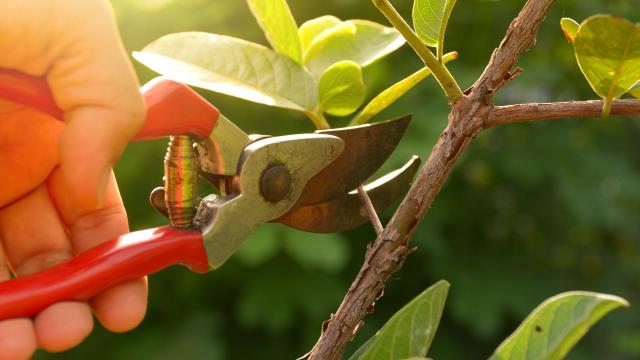There are a variety of reasons you may want to prune your plants or trees, from keeping them to a certain shape or size, to promoting fuller growth and more buds. But before you start snipping away, take some time to learn about the different types of pruning and how they can yield different results.
How to prune by pinching
Pinching involves using two fingers to remove the head of a plant to encourage more significant growth. When the stem and top leaf are pinched away, it signals the plant to bud more stems and leaves to compensate. As a result, the leaves will become fuller to capture more sun and grow additional buds and stems. (You can also pinch a plant to keep it to the desired size.)
When to use deadheading and topping
Deadheading is similar to pinching in that you can use two-finger method — or you can use shears or clippers. When deadheading, cut or pinch as close to the head base, where it meets the next rung of leaves, as you can. This technique fully removes the seed pod so the plant can grow fuller, and specifically so the flowers will produce more buds for longer. This sort of pruning, when applied to trees, is called topping.
Topping and deadheading are considered high-stress forms of plant care. Texas A&M’s Earth Kind Landscaping describes topping as “the process whereby a tree is cut back to a few large branches. After 2 to 3 months, regrowth on a topped tree is vigorous, bushy, and upright.” It has the potential for significant gains but can jeopardize the tree’s strength if not done correctly, so proceed with caution.
How to thin your shrubs
When it comes to maintaining the size of a plant while also promoting growth, thinning is great for shrubs and trees. Thinning cuts away smaller branches to dictate the shrub’s size and help focus the plants’ energy on its main branches. To thin a plant, cut the smaller branch at the “crotch” (or the Y section) of the tree. Watch horticulturist Catherine Moravec demonstrate this in a YouTube video for Colorado Yard Care.
Shrubs should be thinned by cutting smaller branches at the base just above the soil. This leaves more room for the other branches to grow and for more oxygen and light to break through to the bigger branches and leaves.
When to shape and sheer
Sometimes you’ll prune simply because you want a plant or tree to grow in a certain direction or maintain its shape or size. You can shape a plant or tree with shears or clippers — or sometimes even power chainsaws — to cut away smaller leaves or branches in a particular pattern. This method is common on hedges, dwarf trees, and evergreens.

Leave a Reply
You must be logged in to post a comment.